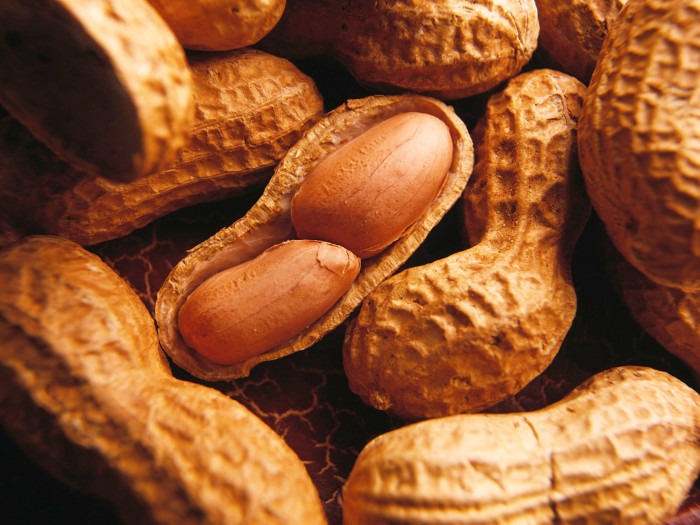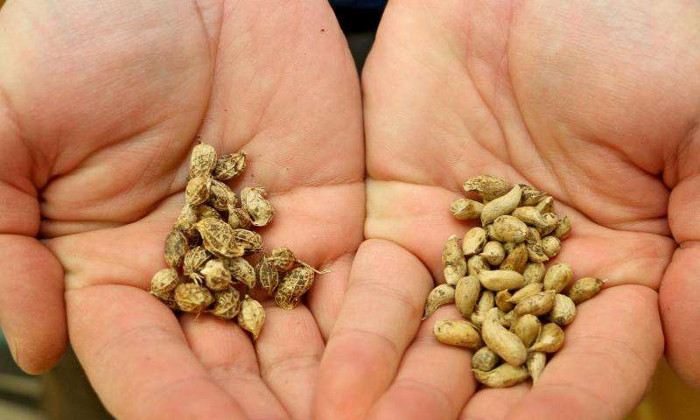This biological step could save hundreds of millions of people in the future
Researchers have successfully deciphered the genome of peanuts (or peanuts) and their ancient brothers, which could help hundreds of millions of people escape the world's food shortage.
The peanut-shaped ceramics or peanuts decorated with peanuts from Brazil appeared 3,500 years ago, but scientists have never made the final decision on the exact origin of the plant variety. widely grown all over the world.

It may sound strange, but maybe not many of us ever have the idea of "Where does peanuts come from?".
Researchers believe that peanuts today - the scientific name Arachia hypogaea - are formed when two species of wild beans in South America are Arachis duranensis and Arachis ipaensis chalked together.
Now, genetic studies have shown that this hypothesis is correct and it can create a revolution in breeding peanuts.
Arachis ipaensis is thought to be extinct until a collector discovered this peanut in a village in Bolivia. What's more interesting is that this rare peanut grows hundreds of miles north of Arachis duranensis - where the peanut grows at the foothills of the Andes, the border between Bolivia and Argentina.
Therefore, researchers from the University of Georgia and the International Peanut Genome Initiative learned about the history of peanuts through the study of DNA from ancient botanical collections.

Arachis ipaensis (left) - Arachis duranensis (right).
Based on this information, they identified the time when the original two wild peanuts chalked together and compared that time with data on the first South American migration. The results of the study were published recently in Nature Genetics.
Talking to Scientific American, David Bertioli, author and researcher of the University of Brasilia and UGA said: "Now we know that, during our long journey, the early inhabitants The first part of the land of South America brought the wild peanut A. ipaensis to the land where A. duranensis was grown 10,000 years ago. "
"At the same time and on the same land, bees pollinated peanuts and created hybrids that our South American ancestors used to eat and eventually developed into modern peanuts like the day. now on".
The researchers also deciphered the genes of all three peanuts and learned that contemporary peanuts have about 20 pairs of chromosomes , inheriting 10 genetic chromosomes from their ancestors.
Understanding the genetic structure of peanuts will help researchers find factors that increase their resistance to disease, heat, drought and insect pests. This will also help people better understand peanuts and help them grow in many environmental conditions around the world.

Mr. Bertioli also shared: "We do this because decoding the genes of peanuts really makes sense in breeding good peanuts."
Lac has greatly influenced the history of mankind, and according to Mr. Bertioli, it will even play a more important role when the world is facing struggles to feed people in next century.
"The hybrids have spread throughout South America during the pre-Colombian period, washed up on the Atlantic and Pacific coast, even infiltrating both Central America and Mexico.
Later, groundnut is brought to other regions such as Africa, Asia, North America and Australia, where it becomes an important crop. It is a kind of food that has experienced a lot of interesting time in its development history. "
- Developed the world's first artificial biological retina
- We will be millions of years away,
- Super avian influenza virus becomes a biological bomb?
- The world's first biological eye was born, illuminating hope for millions of people
- Technologies will appear in the future
- 5 reasons why people need to go to Mars
- Learn about bio-batteries - Green energy sources in the future
- 2 breakthrough inventions affect the future of humanity
- Hello Spring Dinh Hoi
- Race determines the speed of aging?
- Unbelievable benefits when talking alone
- Biological eyes for the blind
 Why do potatoes have eyes?
Why do potatoes have eyes? 'Tragedy' the world's largest carnivorous life: Death becomes ... public toilet
'Tragedy' the world's largest carnivorous life: Death becomes ... public toilet Tomatoes were once considered 'poisonous' for 200 years
Tomatoes were once considered 'poisonous' for 200 years Detecting microscopic parasites on human face
Detecting microscopic parasites on human face